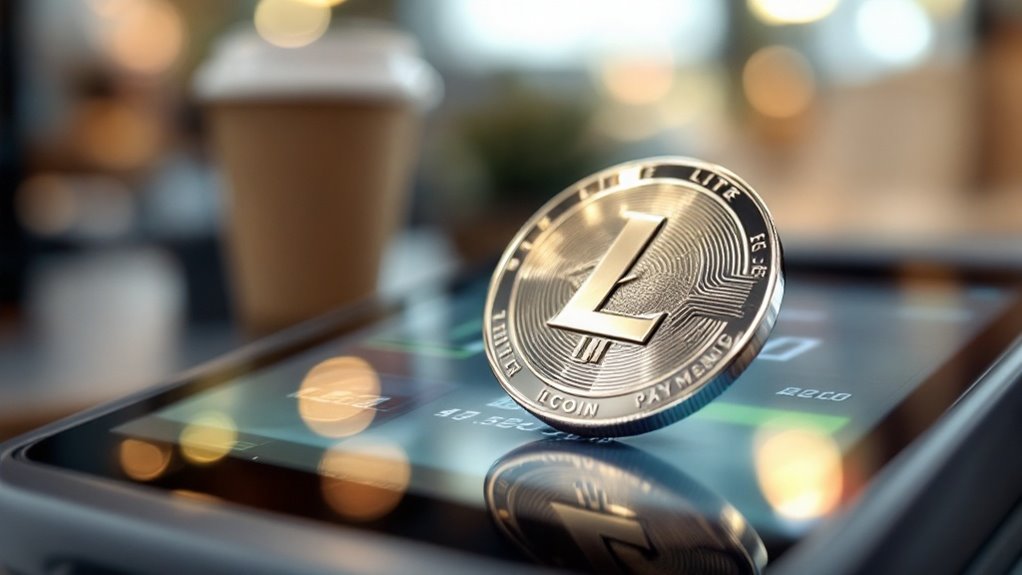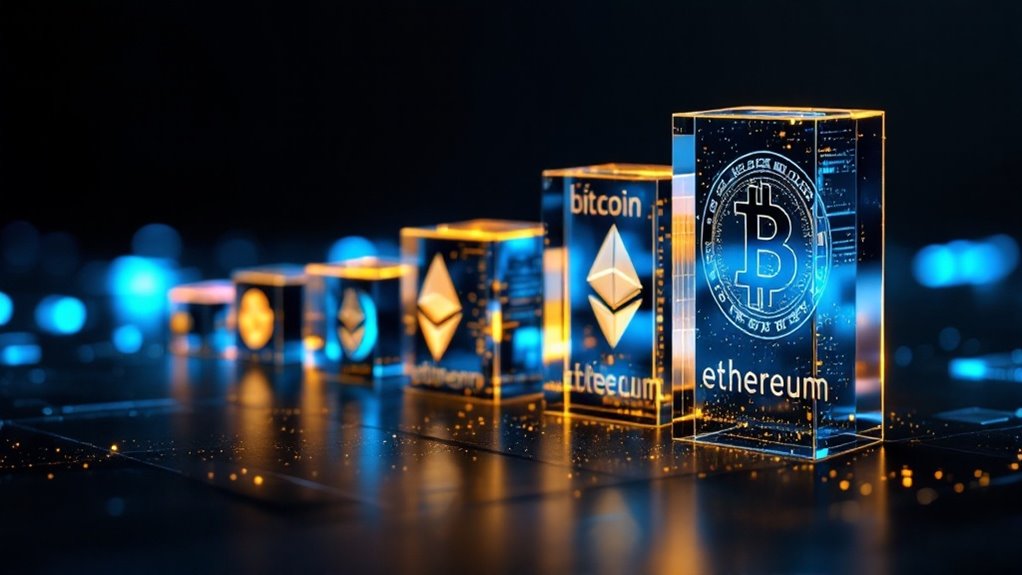MemeCoinCook.com serves up spicy crypto memes and info for entertainment only—this ain’t financial, investment, legal, or professional advice! Whipped up with AI flair, our content might have some half-baked bits, so DYOR before you dive into the crypto pot. NFA, folks—we’re just tossing out ideas, not guarantees. We make no claims about the accuracy, legality, or tastiness of our posts. Sip our content at your own risk! Check our Terms of Use for the full recipe.

What Is Litecoin? Understanding This Popular Cryptocurrency
Litecoin is a decentralized cryptocurrency that processes transactions faster and cheaper than Bitcoin. Created in 2011 by Charlie Lee, it uses Scrypt mining algorithm, making it accessible to regular computers instead of specialized hardware. With 2.5-minute block times and fees costing just pennies, Litecoin works great for everyday purchases. Major retailers and payment processors accept it, proving crypto isn’t just for “hodlers.” This isn’t financial advice—trade at your own risk. Discover how this “digital silver” actually functions below.
The Technology Behind Litecoin and How It Works

Few technologies have captured the imagination of digital finance quite like Litecoin’s blockchain architecture. This cryptocurrency operates on a decentralized network where no single entity holds control—think of it as a digital democracy.
Litecoin transforms digital finance through decentralized technology where power belongs to everyone, not institutions.
Core Technology
- Blockchain ledger: Records all transactions permanently and securely
- Open-source code: Anyone can inspect or contribute to the project
- Proof-of-Work consensus: Miners validate transactions using computational power
The Scrypt Difference
Unlike Bitcoin’s SHA-256, Litecoin uses Scrypt—a memory-intensive algorithm that regular computers can handle. This means you don’t need a crypto mining farm to participate. However, this ASIC-resistant setup was short-lived as the first Litecoin ASIC miners appeared in 2014.
Litecoin generates new blocks every 2.5 minutes, making transactions faster than Bitcoin’s 10-minute blocks. It’s like choosing the express checkout lane. The network maintains a maximum supply cap of 84 million coins, providing predictable scarcity similar to precious metals. Recent upgrades include MimbleWimble technology integration, which enhances transaction privacy and fungibility on the network.
*This isn’t financial advice—trade at your own risk.*
Key Features and Benefits of Using Litecoin
While many cryptocurrencies promise revolutionary features, Litecoin delivers practical benefits that users actually care about.
Lower Fees = More Pizza Money****
Litecoin transactions cost pennies, not dollars. This makes it perfect for buying everyday items without fees eating your lunch money.
Cross-border payments become affordable too. Many merchants appreciate the lower processing costs compared to traditional payment methods.
Speed That Actually Matters
With 2.5-minute block times, Litecoin confirms transactions four times faster than Bitcoin. Your payment clears in about 10 minutes—faster than making instant ramen. Unlike newer platforms that achieve 50,000 transactions per second through complex architectures, Litecoin focuses on reliable, proven technology.
True Decentralization
The Scrypt algorithm keeps mining accessible to regular folks with decent computers.
No need for warehouse-sized operations. This spreads control across more people. Created by Charlie Lee in 2011, Litecoin was designed to enable broader participation in cryptocurrency mining.
Future-Ready Tech
Litecoin supports Lightning Network for instant payments and atomic swaps for trading between blockchains.
It’s like having a Swiss Army knife for crypto.
This isn’t financial advice—trade at your own risk.
Real-World Applications and Use Cases for Litecoin
Where exactly can someone spend their Litecoin in the real world? Unlike some crypto that just sits in wallets, Litecoin actually gets used for buying stuff.
Payment Options
- Major payment processors accept Litecoin alongside traditional currencies.
- Online retailers and physical stores integrate it into checkout systems.
- Popular exchanges and wallets make transactions simple.
Why Merchants Like It
The combination of fast processing times and low fees makes Litecoin practical for everyday purchases. With lower fees compared to Bitcoin, Litecoin offers merchants a cost-effective payment solution that benefits their bottom line.
While Bitcoin might take longer and cost more, Litecoin transactions zip through quickly. Litecoin’s 2.5 minute blocks mean customers don’t wait around wondering if their payment went through.
Think of it as the reliable sedan compared to Bitcoin’s luxury SUV. Unlike complex DeFi platforms that require technical knowledge, spending Litecoin remains straightforward for everyday users.
From buying coffee to electronics, Litecoin works where speed and affordability matter most.
*This isn’t financial advice—trade at your own risk.*
Frequently Asked Questions
Who Created Litecoin and What Was Their Background?
Charlie Lee, a computer scientist born in 1972 in Ivory Coast, created Litecoin in 2011. He moved to the U.S. young and earned his computer science degrees from MIT.
Professional Background:
- Worked at Google for ~10 years (ChromeOS, Maps, Android)
- Joined Coinbase in 2013
- Now manages the Litecoin Foundation
Lee designed Litecoin as Bitcoin’s “silver” – faster, cheaper transactions for everyday use.
*This isn’t financial advice—trade at your own risk.*
How Many Litecoins Will Ever Exist in Total?
Approximately 9 million Litecoins remain unmined, creating interesting scarcity dynamics for hodlers.
The total supply is permanently capped at 84 million coins—exactly four times Bitcoin’s limit. This hard cap guarantees no more coins can ever be created beyond this amount.
It’s like having a limited-edition trading card set. The final Litecoin should be mined around 2140, making it a truly finite digital asset.
*This isn’t financial advice—trade at your own risk.*
When Was Litecoin First Launched to the Public?
Litecoin officially launched to the public on October 13, 2011.
Charlie Lee, the creator, released the open-source code on GitHub on October 7, then fired up the network five days later.
This made Litecoin one of the OG altcoins—back when you could count crypto projects on your fingers.
Think of it as Bitcoin’s younger sibling arriving fashionably early to the party.
*This isn’t financial advice—trade at your own risk.*
What Does “Silver to Bitcoin’s Gold” Mean?
The phrase “silver to Bitcoin’s gold” describes Litecoin’s role in the cryptocurrency market.
Just like silver historically served as everyday currency while gold stored wealth, Litecoin handles daily transactions while Bitcoin acts as “digital gold.”
Litecoin processes payments faster and cheaper, making it practical for regular use. Bitcoin, meanwhile, functions more as a long-term investment asset.
Both have value, just different purposes.
*This isn’t financial advice—trade at your own risk.*
Can I Mine Litecoin With Regular Computer Hardware?
Technically, someone can mine Litecoin using their regular computer’s CPU or GPU. However, this approach isn’t profitable anymore.
CPUs generate extremely low hash rates, making earnings practically zero after electricity costs. Even gaming GPUs struggle against specialized ASIC miners that dominate the network.
Regular computers might mine a few cents worth of crypto while racking up dollar bills in power costs. It’s educational, not profitable.
*This isn’t financial advice—trade at your own risk.*
Conclusion
Litecoin stands as a silver-plated bridge in the crypto landscape, connecting traditional finance to digital innovation. Its faster transaction speeds and lower fees paint a practical picture for everyday users traversing the blockchain highway. While Bitcoin remains the golden standard, Litecoin quietly processes payments like a reliable engine humming in the background. As adoption grows, this “digital silver” continues proving that sometimes the best technology isn’t the flashiest—it’s the one that simply works.
*This isn’t financial advice—trade at your own risk.*



